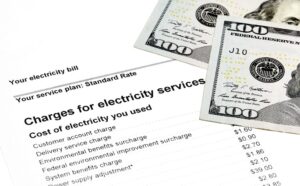
Energy Management Services represent a groundbreaking approach to controlling energy consumption and reducing utility bills, marking a significant leap forward in our journey towards sustainability and energy efficiency. With the global emphasis on environmental stewardship and the increasing pressure to reduce energy costs, energy management system (EMS) has become a critical tool for households, businesses, and governments alike.
This blog explores the essence of Energy Management Systems, illustrating how they offer a scientific method for managing energy use and minimizing expenses.
At its core, an EMS is a sophisticated framework designed to systematically analyze, control, and conserve energy within a building or organization. It encompasses various technologies and practices, ranging from simple home setups to complex algorithms managing the energy flows of industrial plants. The goal is straightforward: to ensure energy is used as efficiently as possible, reducing waste and optimizing performance.
Why Embrace Energy Management Systems?
The reasons to adopt EMS are compelling and multifaceted. Primarily, it leads to significant cost savings by identifying and eliminating wasteful energy use. For businesses, this can mean improved profitability through lower operational costs. For households, it translates into reduced utility bills, freeing up income for other uses.
Moreover, EMS contributes to environmental protection. By reducing energy consumption, it directly lowers the emissions of greenhouse gases and pollutants, mitigating the impact of climate change and contributing to a healthier planet.
How Do Energy Management Systems Work?
Energy Management Systems employ a variety of tools and techniques to monitor energy consumption patterns, identify inefficiencies, and implement corrective actions. This might include:
- Real-Time Monitoring: Using sensors and meters to track energy usage across different areas and appliances, providing a detailed breakdown of where and how energy is consumed.
- Data Analysis and Reporting: Sophisticated software analyzes the collected data, identifying trends, peaks, and inefficiencies in energy use.
- Automated Control Systems: Based on the analysis, EMS can automatically adjust settings on appliances, heating and cooling systems, and lighting to optimize energy use without compromising comfort or productivity.
- Predictive Maintenance: By monitoring equipment performance, EMS can predict and schedule maintenance before costly breakdowns occur, ensuring optimal energy efficiency.
Implementing Energy Management Systems
While the concept of energy management services might seem daunting, its implementation can be tailored to the size and complexity of the operation. For homeowners, this might mean installing smart thermostats and energy-efficient appliances. Businesses and larger facilities might adopt more comprehensive systems, integrating IoT (Internet of Things) devices, and employing dedicated energy managers to oversee their EMS.


